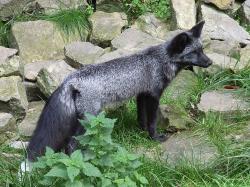Background
Domestication
Domestication is the process in which wild animals becomes adapted to live a life together with humans. One early definition of domestication stated by Price (1984) is "that process by which a population of animals becomes adapted to man and to the captive environment by some combination of genetic changes occuring over generations and environmentally induced developmental events reoccuring during each generation".
This definition points out several important aspects of domestication, such as the genetic influence and the fact that it is a process which happens over several generations. These points also makes it possible to differ domestication from the taming of animals which can be done on a single individual, where one example is the elephant.

One researcher who started to investigate how domestication effects behaviour was Dmitry Belyaev. He started to breed silver foxes on only one trait, namely tameness. After some generations of breeding, the foxes which were more tame started to show traits which can be seen in domestic species today. Such traits was white spotting, changes in ear position and changed reproductive season. They also started to show traits typical for our domestic dog, such as tail wagging in the presence of a human and facial licking as a greeting.
Dominance behaviour
One thing, among others, which domestic species have in common is the social structure they live in. All domestic species live in hierarchal structure, meaning that there is a strict order with one dominant individual and then subordinate individuals. Dominance can be defined as "agonistic interactions between two individuals which are repeated and with the outcome always in favour of the same individual". The individual who wins the encounter are seen as the dominant and the loosing individual as the subordinate. To have a dominant position is favourable since it can result in more mating and a higher access to resource.
In some species, such as the chicken, the hierarchy can be easily seen by what is known as the peck order.
To learn more about the chickens ancestor, red junglefowl and how the peck order works, click in under "About the red junglefowl"
Aim
Social behaviour is an important component of the everyday life of several species and how it is affected by domestication is of importance to understand. Therefore, to further investigate how social behaviour is effected by domestication a selected line of red junglefowl was used.
The aim of the project was to see if the process of domestication by breeding on "fear of human", or tameness, affects the dominance behaviour in red junglefowl.
Responsible for this page:
Director of undergraduate studies Biology
Last updated:
05/06/13
